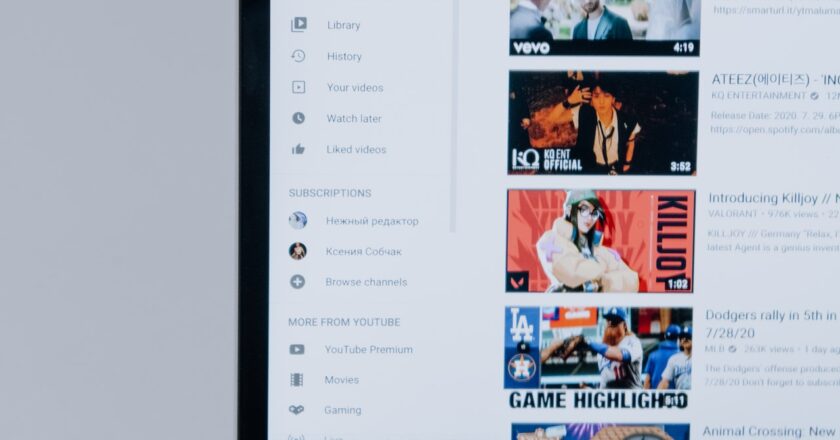Being ranked 1st in the SERPs has been the goldmine of search engine optimization (SEO) for many years, but now top-ranked websites have vacated the spotlight for position zero, the new top-ranked spot in Google.
Today, many website owners competing for the position. If you want to land on position zero, we will provide information to help you understand what position zero is about and tips on how to claim the spot.
What Is Position Zero?
Also known as Featured Snippet, position zero appears above the organic search engine results. This position is the prime location for brands that want to build awareness and drive organic traffic to their website.
With voice search becoming increasingly popular, Google uses the featured snippet to provide answers to voice searches. Position zero can be a paragraph, ordered or unordered list, table, or video, depending on the search term. Take, for example, a video snippet for a search query “how to transplant a seedling”.
Here are the top benefits of claiming position zero in Google Search:
- More SERP territory to occupy
- Stronger presence in voice search results
- Higher click-through rates (CTR)
Why Is Position Zero Valuable?
Initially, marketers opposed the introduction of featured snippets in SERPs can be detrimental to traffic, causing people to abandon their websites. Contrary to the belief, position zero significantly boosts your stats, including visits, CTR, and conversions. In addition to its many benefits, it also helps build your brand expertise. Providing a clear and direct answer to a question shows a powerful statement about your brand.
What Types of Content Qualifies for Position Zero
Some content cannot be displayed as a featured snippet. However, specific types have a higher potential of making it to position zero.
- Comparisons
Most shoppers are more likely to read comparison content to get more information about a certain product, such as gadgets or new phones, before buying. Websites that use tables to compare products are more likely to be displayed in featured snippets.
- Provide Answers to Questions (how, what, when, where)
Most information found on the Internet is created to provide answers to the user’s questions. When creating content, think about the most queries people use. This will increase your likelihood of landing on position zero.
- Definitions
Providing definitions to complex terms are commonly displayed as featured snippets in search engines. Google algorithms determine which content has the best definition.
- Lists
A featured snippet of content with lists of information often comes in the form of bullet points or numbered lists. Once you click through, you will see more bullet points and additional information.
- Step-by-Step Instructions
Instructional content helps solve a certain problem. Take, for instance, how to make a simple cabinet box. This type of content can be in the form of text or tutorial videos. To optimize your content, choose relevant keywords to increase your chances of claiming the spot.
Optimizing Your Content for Position Zero in Google
Many marketers strive to secure the most coveted spot in Google. But what can you do to land in position zero?
Luckily, there are several things you can do to optimize your content to claim this prestigious spot and capture the attention of your target audience.
- Understand the Featured Snippet
Before aiming for Position Zero, it’s essential to comprehend a featured snippet. It’s a concise summary of information that appears at the top of some search results. Google pulls this snippet from a relevant webpage to provide users with quick answers to their queries.
- Target Question-Based Queries
Featured snippets often appear for question-based queries like “how to”, “what is”, or “why does”. Tailor your content to address common questions related to your industry or niche.
- Create High-Quality Content
Content remains king, even when aiming for position zero. Craft well-structured, informative, and engaging content that answers the target question thoroughly. Clear, concise, and easy-to-understand language is key.
- Focus on on-Page SEO
On-page optimization plays a vital role in achieving Position Zero. Pay attention to your title tag, meta description, headers, and content formatting. Incorporate relevant keywords throughout your content.
- Provide Clear Answers
Google prefers concise answers that directly address the user’s query. Include a brief, precise answer to the question in the opening paragraph of your content.
- Use Lists, Tables, and Bullets
Structuring your content with lists, tables, and bullets can increase your chances of getting a featured snippet. These formats make it easier for Google to extract relevant information.
- Leverage FAQ Sections
Websites with Frequently Asked Questions (FAQ) sections are a goldmine for featured snippets. Compile and answer common questions, structuring them in a clear and organized manner.
- Implement Schema Markup
Schema markup is a tool designed to help search engines understand what the content is all about. Adding appropriate schema markup to your content can enhance its chances of appearing as a featured snippet.
- Target Long-Tail Keywords
Long-tail keywords are more specific queries that often trigger featured snippets. Identify relevant long-tail keywords and create content that thoroughly addresses these queries.
- Monitor Competitors
Analyze your competitors who have secured featured snippets. Identify the strategies they’ve used and brainstorm ways to provide even more comprehensive and valuable answers.
- Create “How-to” Guides
Step-by-step guides are a favourite for featured snippets, especially for instructional queries. Create detailed “how-to” guides that walk users through a process.
- Utilize Videos and Images
Visual content, such as videos and images, can enhance the appeal of your content for featured snippets. Use these elements to complement your written information.
- Optimize for Voice Search
As voice search becomes more prevalent, optimizing for voice-friendly queries can increase your chances of claiming position zero. Consider the natural language people use in spoken queries.
- Test and Refine
Achieving position zero might require experimentation and optimization. Continuously monitor your content’s performance and be ready to adjust your strategies based on the results.
Position zero offers a unique opportunity to capture users’ attention and establish your authority in your field. By understanding the intricacies of featured snippets, tailoring your content to user intent, and optimizing your page structure, you can increase your chances of claiming this valuable spot and driving more traffic to your website.












